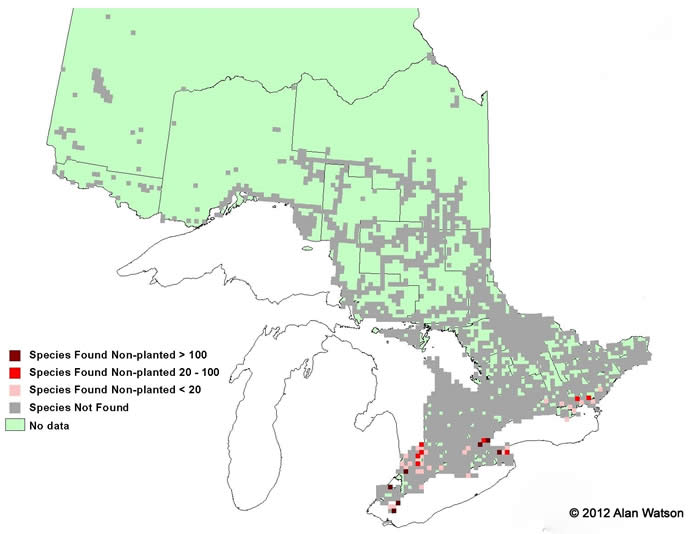chinquapin oak
chinquapin oak - Quercus muehlenbergii
Chinquapin oak is a Carolinian species, common throughout the Eastern United States but only found in southern parts of Ontario. Like all oaks, this species has durable, dense wood. Chinquapin oak acorns are edible and mild in flavour, and can be eaten raw. Their wavy leaves are distinct compared to other native Oaks, except for those of the closely related and rare dwarf chinquapin oak. Chinquapin oak may grow from 15m to 30 m in height (in forest cover), and prefer dry, rocky sites.

Chinquapin oak acorns are edible and sweet. However, because dwarf chinquapin oak is so rare, and the two can be confused, acorns should not be harvested from small trees in the wild. Photo by Chris Earley.

Chinquapin oak leaves are long, alternate, with 8-15 bristled teeth per side. Dwarf chinquapin oak leaves are much smaller (<10cm) and with fewer teeth per side (<10). Photo by Chris Earley.

Chinquapin oak can grow up to 30 m in height and 60 cm in diameter. Mature trees have pale grey bark with thin, narrow scales.

Ontario Tree Atlas map of non-planted Chinquapin Oak. 1995-1999.
References
Farrar, J.L.. 1995. Trees in Canada. Fitzhenry & Whiteside Ltd. Toronto. ON. 504 pp.
Kershaw, L. 2001. Trees in Ontario: Including tall shrubs. Lone Pine Publishing. Edmonton. AB. 240 pp
Muma, W. 2011. Ontario Trees and Shrubs. [Online] Available: www.ontariotrees.com
OMNR, 2011. Ontario Ministry of Natural Resources: Ontario Tree Atlas. [Online] Available: http://www.mnr.gov.on.ca/en/Business/ClimateChange/2ColumnSubPage/267027.html
OMNR, 2008. Ontario’s Biodiversity: Species at Risk.